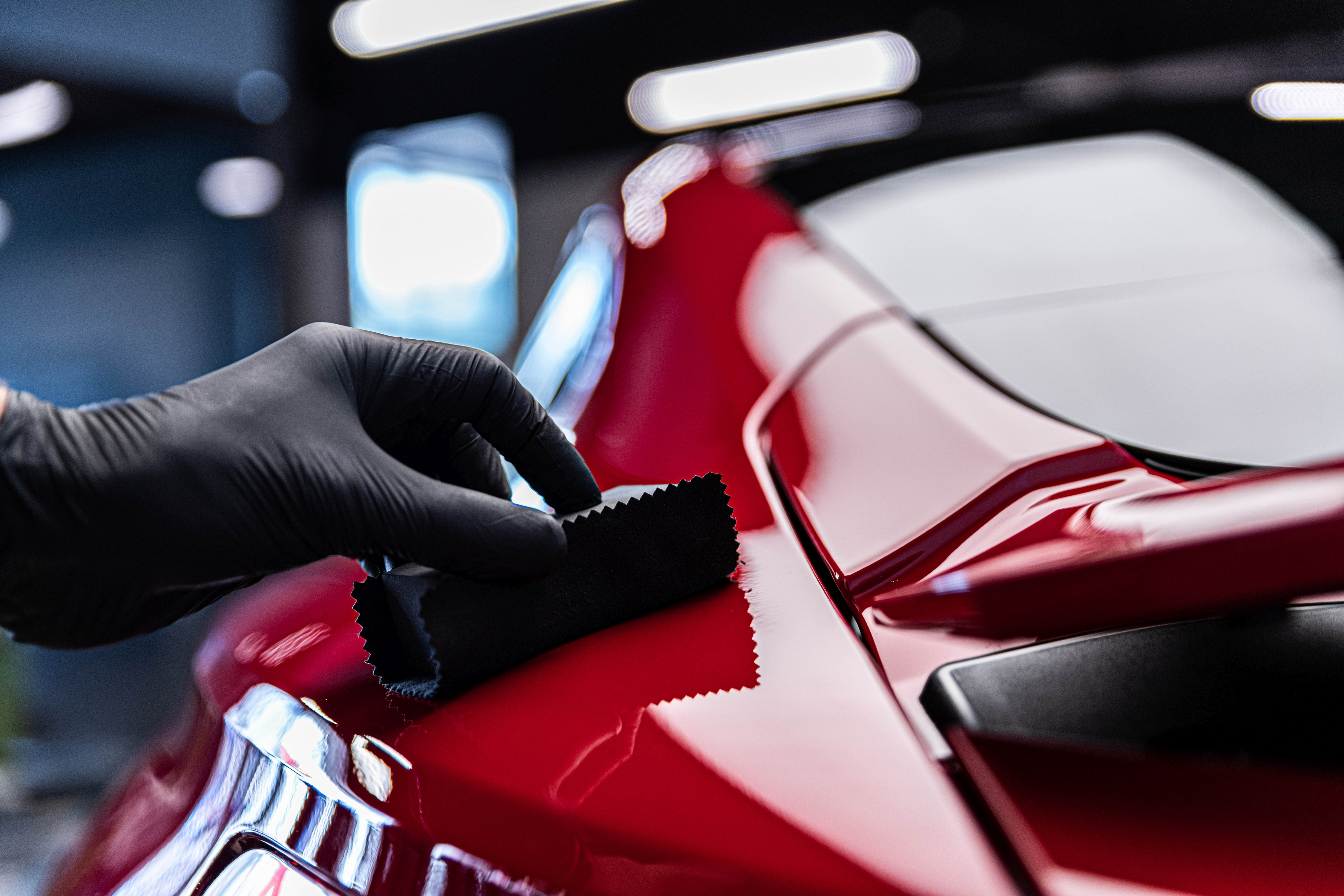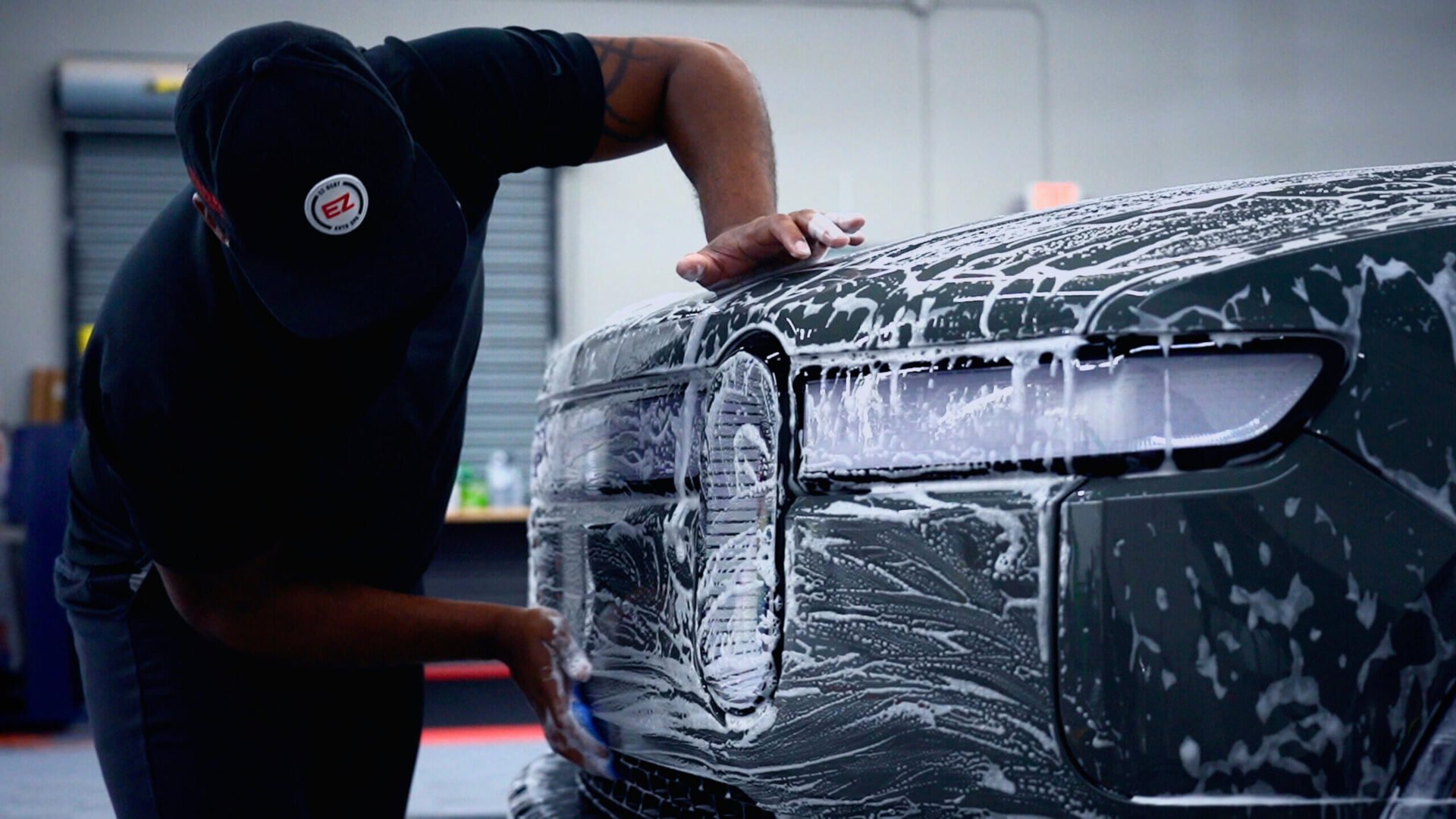Ceramic Coating vs. Sealants: Recognizing the Distinctions for Your Car
Ceramic Coating vs. Sealants: Recognizing the Distinctions for Your Car
Blog Article
The Value of Ceramic Coating: Safeguarding Your Vehicle's Exterior With Accuracy
In an age where maintaining the visual and practical stability of your vehicle is extremely important, ceramic layer arises as a pivotal remedy. This protective layer not only defend against environmental difficulties however also raises the visual charm of your vehicle. With its one-of-a-kind bonding properties, ceramic finish provides a level of security that much goes beyond typical waxing methods. Yet, just how specifically does it attain such exceptional results? As we check out the subtleties of its application and contrast it to various other options, one can not wonder however aid about the specifics that make this innovation essential for contemporary vehicle treatment.
Benefits of Ceramic Coating
When it comes to protecting a cars and truck's aesthetic appeal, ceramic coating offers considerable advantages. By creating a semi-permanent bond with the lorry's paint, ceramic coatings properly stop oxidation and fading, making sure that the automobile keeps a shiny, showroom-like surface for an extensive duration.
Along with its protective high qualities, ceramic covering provides exceptional hydrophobic buildings, causing water and various other fluids to bead off easily. This attribute streamlines the cleaning procedure, as dust and particles are less likely to comply with the surface area, decreasing the frequency and initiative required for maintenance. In addition, the layer's resistance to chemical spots from acidic pollutants like bird droppings and tree sap is one more noteworthy advantage, lessening possible paint damages.
Ceramic coatings additionally boost scratch resistance, supplying a layer that can absorb small abrasions and swirl marks. This characteristic is specifically helpful in maintaining an excellent surface area, minimizing the chance of noticeable flaws and preserving the stability of the vehicle's paintwork in time.

Just How Ceramic Layer Functions
Understanding the auto mechanics behind ceramic layer exposes its efficiency as a protective solution for lorries. Ceramic coatings are basically liquid polymer applications that chemically bond with an auto's manufacturing facility paint, developing a protective layer. This layer functions as a barrier versus ecological pollutants such as ultraviolet, dust, and crud rays, which can weaken an auto's exterior in time. The essential part in ceramic layer is silicon dioxide (SiO2), which stems from quartz crystals and is recognized for its phenomenal hardness and resilience.
Application of ceramic covering includes a meticulous process. At first, the lorry's surface have to be thoroughly cleansed and decontaminated to ensure optimal adhesion. Once used, the liquid polymer forms a semi-permanent bond with the paint, solidifying right into a clear, resilient shield. This shield improves the car's gloss and hydrophobic residential or commercial properties, helping with much easier cleansing by creating water and contaminants to bead and slide off effortlessly.
Additionally, the finish's molecular structure offers resistance to minor scrapes and chemical spots. Unlike waxes or sealers that rest on top of the paint, ceramic coatings incorporate with the surface area, using resilient protection. This assimilation is basic to its efficiency, ensuring the lorry's surface continues to be beautiful for many years.
Contrasting Ceramic Coating to Alternatives
In the realm of automotive protection, ceramic coating stands as an awesome option when contrasted to conventional choices such as sealers and waxes. While waxes offer a short-term shiny finish, typically lasting only a couple of weeks to months, ceramic coverings give a longer-lasting option, commonly withstanding for several years. This resilience is associated to the chemical bonding that happens when ceramic finishings are applied, developing a solid layer that is resistant to ecological threats.
Contrastingly, sealants, although even more resistant than waxes, still disappoint the robust defense supplied by ceramic coatings. Sealants can normally last for approximately a year, supplying an artificial shield against specific components. Nonetheless, they lack the superior hydrophobic residential properties and UV defense that ceramic finishes provide.
Additionally, ceramic coverings supply improved scrape resistance, which neither waxes neither sealers can efficiently match (ceramic coating). This is particularly useful in maintaining a vehicle's excellent look. Furthermore, ceramic resource coverings simplify upkeep efforts by reducing the adherence of dust and gunk, thereby promoting much easier cleansing. In summary, while standard waxes and sealers use standard protection, ceramic finishings provide a thorough, long-lasting remedy that dramatically boosts and preserves the vehicle's outside coating.
Application Process Explained
Applying ceramic finish to a car calls for a thorough process to make certain ideal outcomes and longevity. The first step involves completely cleaning up the auto's surface to eliminate dust, oil, and previous waxes. This is essential for making sure the coating adheres appropriately. A pH-neutral hair shampoo and a clay bar treatment are often made use of to accomplish a beautiful surface. Once cleaned, the car is dried and brightened to eliminate any imperfections, as any existing swirls or scratches can come to be more obvious after the covering is applied.
Adhering to surface prep work, the application of the ceramic layer begins. The layer is normally applied in a climate-controlled setting to stop dust particles from settling on the freshly cleansed surface. Making use of an applicator pad, the ceramic finish is used in little sections to ensure even coverage. It is necessary to adhere to the manufacturer's standards regarding the suitable treating time and application thickness.
After application, the finishing needs a details curing duration, throughout which the car should be shielded from water and contaminants. This curing process can vary depending upon the item however usually ranges from 24 to two days. Eventually, this detailed process is critical in achieving a glossy and durable surface.
Upkeep Tips for Long Life
To preserve the longevity of a ceramic coating, adherence to a disciplined maintenance regimen is essential. Stay clear of automatic vehicle cleans, as their severe brushes can jeopardize the covering's stability.
Post-wash, drying out the car with a tidy microfiber towel prevents water places that might break down the coating in time. Additionally, apply a ceramic layer booster every few months. These boosters enhance the hydrophobic residential or commercial properties and boost the covering's safety capabilities, guaranteeing it remains effective versus impurities.
Bear in mind that vehicle parking locations play an essential function in maintenance. ceramic coating. Whenever feasible, park in shaded locations to lessen UV exposure, which can gradually deteriorate the finishing. For lasting storage, take into consideration utilizing a vehicle cover for added protection versus environmental elements
Conclusion
To conclude, ceramic finish works as a crucial safety layer for lorry outsides, using durable defense against environmental aspects such as uv, crud, and click site dust rays. By creating a semi-permanent bond with the paint, it improves aesthetic appeal while protecting the cars and truck's worth. Its hydrophobic residential or commercial properties promote easier maintenance, distinguishing it from different protective techniques. Recognizing the application procedure and sticking to maintenance referrals are necessary for taking full advantage of the durability and effectiveness of ceramic covering.
When it comes to maintaining an automobile's visual charm, ceramic finish uses substantial advantages. By forming a semi-permanent bond with the automobile's paint, ceramic finishings successfully protect against oxidation and fading, ensuring that the automobile keeps a glossy, showroom-like finish for an extensive period. Ceramic coverings are essentially fluid polymer applications that chemically bond with an auto's factory paint, developing a protective layer. In recap, while standard waxes and sealers offer basic protection, ceramic helpful resources coatings provide an extensive, long-term option that significantly maintains the automobile and boosts's outside surface.

Report this page